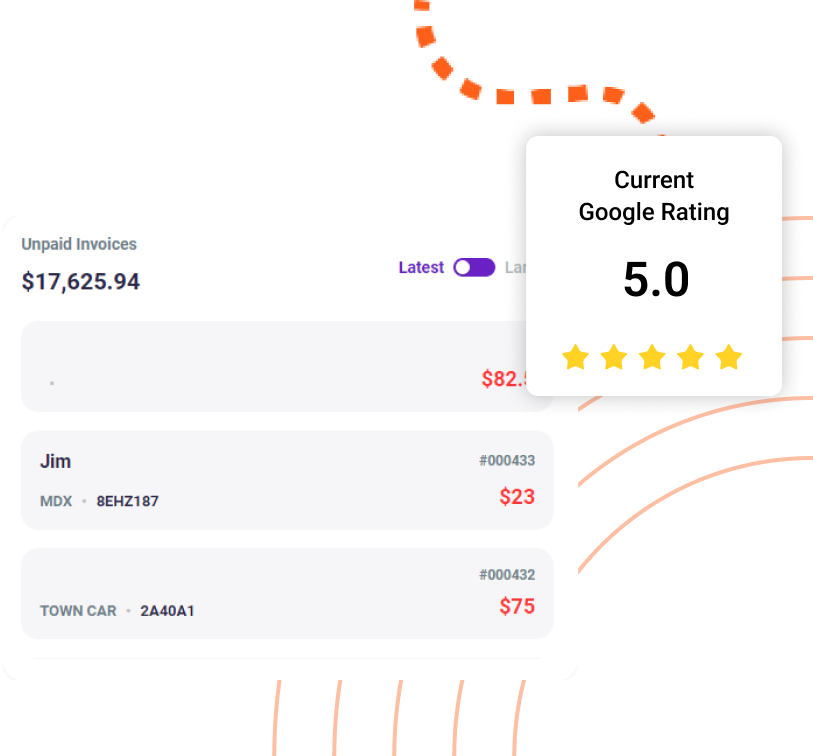Modern auto repair shops can have many opportunities and challenges in the auto repair industry.
Technology is advancing rapidly in this industry. For instance, shops now use advanced tools like auto repair scheduling software.
That is why measuring and optimizing performance is essential for sustained success.
This blog will explain five critical metrics defining the modern auto repair shop.
Customer Satisfaction Metrics
Any business depends heavily on customer satisfaction. Trust is a significant factor in auto repair services.
If your customers are satisfied, they are highly likely to come back, which can also lead to positive word-of-mouth recommendations.
Consider these points:
- Customer Loyalty
- Business Reputation
- Competitive Advantage
Metrics to Measure Customer Satisfaction
Net Promoter Score (NPS):
NPS is a simple yet powerful metric. It quantifies customer loyalty by asking a single question such as:
“On a scale of 0-10, how likely are you to recommend our auto repair shop to a friend or colleague?”
Repeat Business Rate:
The repeat business rate measures the percentage of the customers who return to the shop. A high repeat business rate indicates satisfied customers and also fosters long-term relationships.
Studies indicate that increasing customer retention by just 5% can lead to a 25%-95% increase in profits.
Customer Satisfaction Surveys:
Conducting regular customer satisfaction surveys allows your auto repair shops to check the level of satisfaction among customers on various things such as:
- Service quality
- Communication
- Pricing
Service Quality Metrics:
Monitoring service quality metrics directly impacts customer satisfaction. Consistently delivering high-quality service leads to better customer trust.
Operational Efficiency Metrics
The next thing is operational efficiency. It is essential to check the metrics related to operational efficiency.
Here’s why operational efficiency is crucial:
- Cost Savings
- Faster Turnaround
- Improved Quality
- Competitive Advantage
Metrics to Measure Operational Efficiency
Average Repair Time:
Average repair time measures the average duration it takes to complete a repair job from when a vehicle enters the shop to when it is finally ready for pickup by the customer. This m trick directly reflects the efficiency of the shop in the following things:
- Diagnosing issues
- Procuring parts
- Executing repairs
Technician Utilization Rate:
The next metric is the technician utilization rate. This t is the percentage of the time technicians actively work on the tasks compared to the total working hours. This has an effect on the productivity of the team.
Inventory Turnover Rate:
The inventory turnover rate measures how quickly a shop’s inventory is used in a certain period. It shows your shop’s ability to manage the inventory correctly.
Financial Performance Metrics:
Financial performance metrics are vital indicators; they can help you find out the health of your business. It can provide you with valuable insights for your business.
Here is why financial metrics are highly significant:
- Profitability Analysis
- Financial Health Assessment
- Performance Benchmarking
Metrics to Measure Financial Performance
Gross Profit Margin:
The first is the gross profit margin. It is the percentage of revenue that exceeds the cost of goods sold. It shows how effectively a shop is making profits.
Average Revenue per Repair Order:
The average revenue per repair order measures the average revenue generated from each customer. It reflects the shop’s ability to upsell additional services, parts, or accessories and maximize the revenue per customer interaction.
Accounts Receivable Turnover:
This helps measure how fast the shop can collect payment from customers for credit sales. It can also check the business’s efficiency and show its liquidity position.
A higher accounts receivable turnover ratio indicates that the shop collects payments promptly and efficiently.
Employee Productivity Metrics
Employee productivity is a cornerstone of success for auto repair shops. Here’s how employee productivity impacts shop performance:
- Service Quality
- Operational Efficiency.
- Cost Control
Metrics to Check The Productivity of Employees:
Rate of Labor Productivity:
The labor productivity rate can help you check your employees’ overall performance in accordance with the labor hours. If the rate is increasing, this shows that the employees are working better.
- More Efficiently
- Completing tasks faster
- Generating more value for the shop
Training Hours per Employee:
Training hours per employee measure the time invested in employee training and development activities. It reflects the shop’s commitment to:
- Continuous improvement
- Skill development
- Knowledge enhancement
Employee Turnover Rate:
The next thing is the employee turnover rate. It shows the percentage of employees leaving their jobs within a certain period. It shows the ability of your business to:
- Retain
- Engage
- Attract
Technological Integration Metrics
The auto repair industry is evolving very fast these days. In this case, technology plays an essential part in driving innovation. a
It would help to use effective software such as Auto Repair Scheduling Software for better operations.
Here’s why technology is crucial in modern auto repair:
- Diagnostic Precision
- The Streamlined Operations
- Decision Making from the data
Metrics to Measure Technological Integration
Adoption Rate of Digital Tools:
The adoption rate of digital tools checks and shows how much auto repair shops are adopting new technology and innovation. It contains various ranges of tools. Such a :
- Diagnostic equipment
- Management systems
- Communication platforms
- Customer relationship management (CRM)
Efficiency Gains from Technology:
Efficiency gains from technology quantify the improvements in productivity, workflow efficiency, and resource utilization resulting from technological integration.
The following key performance indicators can be used:
- Repair times
- Labor productivity
- Turnaround times
Customer Engagement through Technology:
Customer engagement metrics measure the shop’s ability to interact with customers through digital channels and technology-enabled touchpoints. This includes:
- Online appointment scheduling
- Automated service reminder
- Digital inspections
- Mobile communication platforms.
Conclusion:
Technology is continuously reshaping the auto repair industry. It would help if you embraced it to grow your shop. That’s why you need to leverage the above five metrics. It would also help if you considered an excellent auto repair scheduling software.






